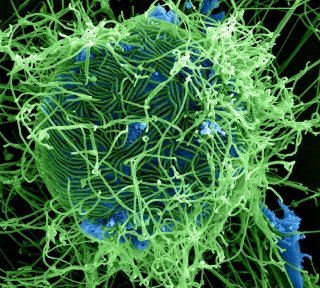One Way To Combat The Ebola Virus: Use Counterinsurgency Tactics
Counterinsurgency concepts are applicable to the deteriorating situation, and these have major implications for the broad coalition joining the fight against Ebola.
As the United States sends military forces forward to support the effort to stop Ebola in West Africa, it is striking to see how similar this struggle is to counterinsurgency operations. While American soldiers will not be conducting any combat or law enforcement operations, counterinsurgency concepts are applicable to the deteriorating situation, and these have major implications for the broad coalition joining the fight against Ebola.
(A good reference on counterinsurgency operations is Army Field Manual 3-24. This article is based on concepts presented in the field manual).
The Struggle is For the Population
It is not about battles or weapons…it is about the people. An insurgency finds shelter and support in the population. The Ebola virus spreads within the population. The true “center of gravity”—the most important thing on which to focus—is the population.
Legitimacy is the Main Objective
At its essence, counterinsurgency is a struggle for legitimacy within the population. The existing authority competes with the insurgency for the population’s support. Some call this a struggle for the “hearts and minds” of the people, but this is not entirely correct. People do not have to like or respect an insurgency in order to support and protect it. Fear of reprisal can be a critical factor in the population’s choice to accept an insurgent movement.
In West Africa, fear has gripped the population. In an area decimated by civil war, governments have been unable to build the capacity to provide suitable health care during this epidemic. Public officials have lost trust, as the inadequate response has delegitimized the government in the eyes of many. Additionally, many Africans do not understand what Ebola is. They see people in rubber suits coming to their homes and taking their loved ones away. Rumors and conspiracy theories run rampant. The people are scared, and they react by keeping their sick relatives hidden in their homes. This is exactly the wrong thing to do, because it gives safe haven to the virus.
Isolation is the Mechanism for Victory
The way to win against an insurgency is to convince the people to separate themselves from the insurgents. The people must choose to remove the insurgents from their midst or tell the local authorities who the insurgents are. An isolated insurgency inevitably dies.
The same is true for Ebola. There is no cure for the virus. The only way to stop it is to halt its spread from person to person. This means that the population must be willing to identify who is sick and allow them to leave to prevent further infections.
Unity of Command is (Probably) Impossible, but Unity of Effort is Essential
It almost always takes a coalition of people and institutions to fight an insurgency, and implementing a strict chain of command is usually impossible. Nevertheless, unity of effort—getting everyone working toward the same goal—is critical to success. This is also true in the fight against Ebola, as local governments, the United Nations, the U.S. military, the World Health Organization, non-governmental organizations such as Médecins Sans Frontières, and volunteer medical workers from around the globe will join together to act. They will not answer to the same chain of command, but they must act in concert with one another.
A Long-Term Commitment is Required to Consolidate Victory
Counterinsurgencies are long-term struggles. Systemic problems usually drive the creation of the insurgency in the first place, and until these underlying issues are addressed, the insurgency will simmer, sometimes mutating and reappearing later. The best counterinsurgency efforts address the root causes of the insurgency over time.
This fight against Ebola must also be a long-term effort, especially among the health care institutions within the affected countries. These have been decimated, and they must be rebuilt with the expertise and capacity to provide an acceptable level of care for the population. If this does not happen, the disease will return. There is a real fear among health experts that the disease will become endemic, existing in perpetuity among humans, mutating and spreading within the vulnerable population. If this tragic development is to be prevented, a long-term commitment to building health care infrastructure and institutions will be needed.
What This Means…
Over the coming weeks and months, much of the attention will be on building the capacity to fight the virus—including building treatment centers, training health care workers, creating logistical networks, and delivering critical supplies. While this capacity is necessary to fight Ebola effectively, it is not sufficient. The main effort has to be gaining legitimacy within the population. In the short term, this means finding the most respected voices in the communities and using them to deliver the critical message about Ebola: those who are infected must be separated so they will not get others sick. This message must be communicated using any means, including nontraditional ones (in Liberia, rap musicians are using their art to warn people about Ebola). A successful outcome depends on the population’s reception of this message.
Colonel Clint Hinote is the 2014-2015 U.S. Air Force Military Fellow at the Council on Foreign Relations. The opinions expressed here are his own. This piece first appeared on CFR’s Africa in Transition blog here.
Image: Flickr.

